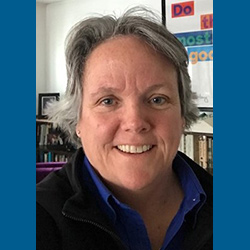Detailed local health information is an essential resource for effective age-friendly community planning.
Two words of advice for anyone interested in research on healthy aging across America: Think local.
There is no shortage of information available about the health of older Americans. But data measuring the country in smaller pieces—ideally, much smaller pieces—can provide more accurate and useful information for anyone working on policies or programs to encourage healthy aging. Like politics, all health is local.
I’ve been part of a research team at the University of Massachusetts Boston collecting and analyzing local health data for the past 7 years. During that time, we have produced town-level detail on healthy aging indicators in a series of state reports.
Most recently, we delivered a report in April profiling every city and town in New Hampshire. It ranked each of those communities on 164 different healthy-aging indicators. We updated a similar report on 379 Massachusetts communities at the end of 2018. Now we are working on an updated report for Rhode Island communities and a new one covering every city and town in Connecticut.
MAKING HEALTHY AGING DATA WORK
All this information makes it possible to see a very wide range of different health conditions and access to care on a community-by-community level. Some differences emphasize obvious environmental factors, such as rural versus urban living. Others clearly point to the impact of socioeconomic differences and the social determinants of health. Sometimes it simply isn’t clear why 2 communities within a short drive of each other present different healthy aging profiles.
But the data is essential for communities trying to understand how best to serve their older citizens. In fact, we tailor our research and analyses to support the work of the local age-friendly movement in each state.
When we started working on the methodology for our very first Healthy Aging report, just one Massachusetts community (Brookline) was deemed age-friendly. The availability of local aging data, tools and reports have helped accelerate change across the state, which now includes 119 age-friendly communities.
REQUIRED RESOURCES
Capturing all that information requires time invested in relationship-building and listening. This kind of research demands humility and genuine partnership to work.
It also requires a lot of resources. In the course of our research, I’ve worked with a big team that includes faculty colleagues Nina Silverstein and Frank Porell, postdoctoral fellows Jay Lee and Wendy Wang, and PhD students Haowei Wang, Natalie Pitheckoff, and Evan Chunga. At key points during the project, we also enlisted the help of other gerontology students as well as consultants Amanda Cox and Steve Braun.
We also needed effective partnerships with thought leaders in each state. We’ve worked with the Massachusetts Healthy Aging Collaborative, the New Hampshire Alliance for Healthy Aging, and Age-Friendly Rhode Island on our data reports. These organizations provide backbone support to age-friendly efforts and are the clear leaders in their states. While each organization is structured differently, they are guided by similar missions.
WHO WILL PAY FOR LOCAL HEALTHY AGING DATA?
Finally, this kind of work requires a commitment from a major funder in the area. Our research would not have happened without the support of the Tufts Health Plan Foundation. Partnerships with the New Hampshire Endowment for Health and the Rhode Island Foundation have also created important in-kind support.
State or municipal funding for healthy aging for healthy aging research and activities simply is not sufficient. I would not be surprised to see investment in this type of work from the private sector in the future, given the opportunities presented by the growing longevity market.
Adjusting to the new reality of an aging society is a big idea. But we’ve found that most change starts from the ground up. Having local data helps people understand their situation and accelerates action toward healthier communities for people of all ages.

Elizabeth Dugan, PhD, is associate professor of gerontology at the University of Massachusetts Boston. Dugan’s work focuses on creating momentum around age-friendly initiatives, developing state and local Healthy Aging Data Reports, and improving transportation options for older adults.
